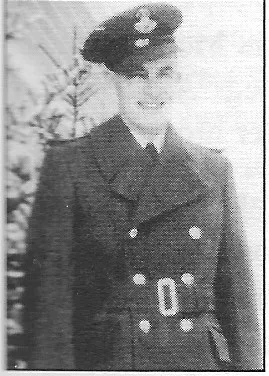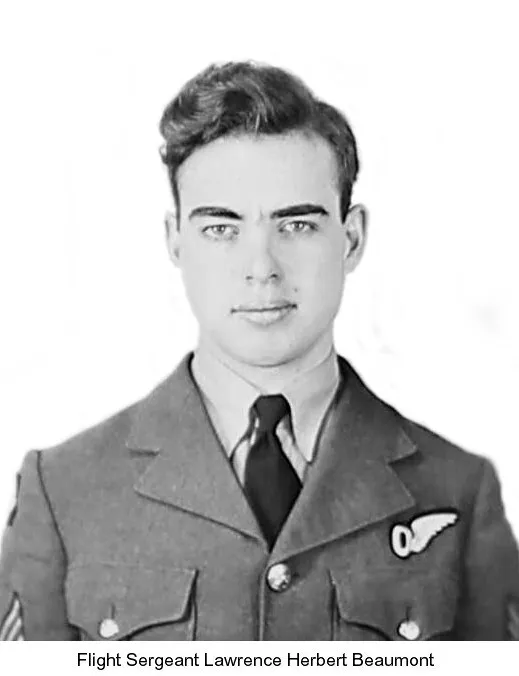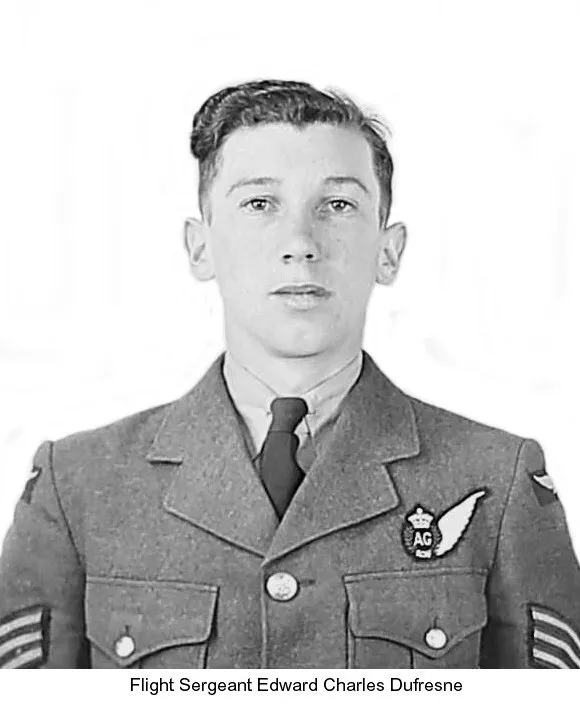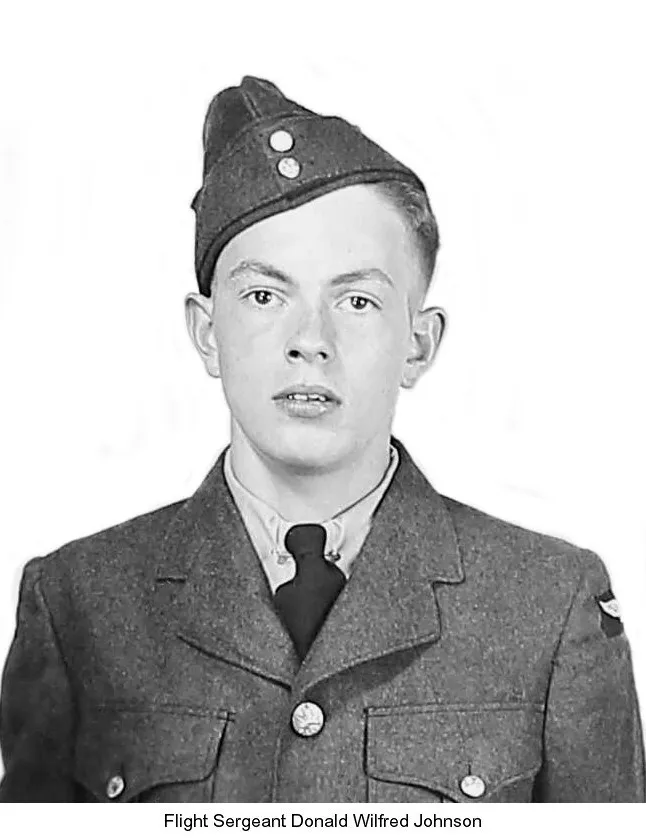Balloch, Albert (Sergeant)
Killed in Action 1945-February-03


Birth Date: 1922
Born: Harare, Mashonaland East, Zimbabwe
Parents: Robert Howie Balloch & May Balloch
Spouse:
Home: Broken Hill, Northern Rhodesia (parents)
Enlistment:
Enlistment Date: unkown date
Service
RAFVR
Unit
44 (B) Sqn- Squadron (RAF)
Fulmina Regis Lusta The king's thunderbolts are righteous
Base
RAF Spilsby
Rank
Sergeant
Position
Flight Engineer
Service Numbers
710349
Target
Crew or Other Personnel
Lancaster SW251
Mission
Lancaster Mk.I SW251
Bombing Karlsruhe Germany 1945-February-03 to 1945-February-03
44 (B) Sqn (RAF) RAF Spilsby
Extract from "The Georgetown Cenotaph Project" by John Desramaux
02/03 February 1945 ? OPS 7 - Karlsruhe GermanyTonight's target Karlsruhe, the capital of the province of Baden, was of particular importance at that time, as a transport centre, being situated on the main line from Western Germany to Italy, via Switzerland. It is also connected with the Rhine for water-borne traffic by the Stich Canal. The Deutsche Waffen and Munitions Werke A. G., an important small arms ammunition works, had a plant here which, because of the unfavourable proximity of Karlsruhe to the French frontier, had been partly closed during the early stages of the war but was now believed to be working at full capacity and employing several thousand workers.
The plan from Bomber Command tonight involves three German targets. Weisbaden, Germany is targeted for the one and only time it will be bombed. The second target are the Krupps synthetic oil plants at Wanne-Eickel and the third the town of Karlsruhe. The crews are briefed in the afternoon, and I am sure groans are heard about heading back into Germany for the second night in a row. The navigators stay behind after the briefing to get their flight plans in order as there is no room for error tonight.
The Karlsruhe OPS will be all 5 groups with 250 Lancasters and 11 Mosquitos ordered up including 16 Lancasters from 44 squadron. Most of this part of Germany is solid 10/10th cloud cover but are hoping for an improvement by 2300 hrs. It's not going to happen. The phase of the moon tonight, which is very important to bomber crews is not good with 3/4 moon visible by 2250 hrs. The conditions are cloudy at RAF Spilsby and a light mist is falling as the green flare is fired to let the crews know it time for take off. All 16 Lancasters lift off between 1944 hrs and 2021 hrs and start heading southeast over the channel and the enemy coast ahead. The Lancasters climb slowly as the are loaded with 7 1/2 hrs of fuel and 1 X 4000 lbs ?Cookie? and 2100 small X 4lb incendiaries sticks.
Tonight the Gallivan crew is aboard Lancaster Mk I SW251 KM-X which and has only been delivered to the squadron recently in December, fresh off the assembly line at Metropolitan Vickers at Mosley Road in Manchester. She has the squadron markings of KM-X as the previous KM-X PB373 was lost on OPS on December 4, 1944, and it was commonplace to recycle the letters as needed. SW251 performed her first OPS with 44 Squadron on January 1, 1945, and can not have more than 100 hrs total flying time since being built.
After a few zigzagging doglegs to try and confuse enemy radar the 44 Squadron crews are approaching Karlsruhe from the southwest about 3 hrs and 40 mins after take off. They find the whole area covered in overcast cloud of stratus and cumulus clouds that are topped at 14,000 ft and a nice bright 3/4 moon above. It appears the forecast of the predicted frontal passage was two hours late according to Flying Officer Thompson aboard PB4176 KM-R and according to Flight Lieutenant Hayler on ND-578 KM-Y ?the weather was very bad. Cloud tops higher than briefed causing aircraft to be unable to climb to correct bombing height in time, due to severe icing?. The extra weight of the ice on the airframe and wings made them too heavy to climb. In addition to all this the lower-level winds are stronger than forecast out of the west. The plan tonight is to drop the bombs from 15,000 to16,000ft while approaching from the west southwest and then descend below the cloud deck to 6,000 ft to escape any potential fighters. What all these poor lads do not know is they are flying into a hornet?s nest of German JU-88 and ME110 night fighters.
The 44 squadron bomber stream approaches the target all very close to 2330 hrs. The controller aboard one of the Mosquitoes orders them to bomb on the green markers. Some of the crews see the green markers and others can just see the glow of the markers in the clouds which make it very difficult for the bomb aimers to hit the target. The crew can also see the glow of the town lights through the clouds. All the crews including Gallivan are approaching Karlsruhe on a easterly heading of 090 DEG and speed of 160 to 170 MPH.
Waiting for 44 Squadron in the moonlight over Karlsruhe tonight is Luftwaffe Squadron Nachtjagdgeschwader 6 (Night Fighter Squadron 6) known as NJG6 based just 100 miles east at Kitzingen airfield. The squadron is equipped with the deadly Messerschmitt ME-110G fighter and JU88 both equipped with radar and "Schrage Musik" a 20 MM upwards firing cannon that can sneak up underneath an unsuspecting Lancaster and fire at its fuel tanks with devastating effect
.NJG6 Group Commander and German Ace is 28-year-old Gerhard ?Gend? Friedrich. Unfortunately, tonight he is flying his ME-110 over Karlsruhe, and he is about to shoot down two Lancasters. Gerhard will go on to shoot down 33 heavy bombers (all at night) and be awarded the Knight's Cross of the Iron Cross. Another German Ace is also lurking in the darkness is Oberstleutnant Herbert Lutje who will survive the war with over 247 missions, 50 aircraft shot down including one tonight. Oberstleutnant Engelbert Heiner another German Ace and Knight's Cross of the Iron Cross recipient is circling Karlsruhe. Strangely enough Heiner had been captured as a POW May 14, 1940, and sent to Canada to a POW camp and then involved in a prisoner exchange with the International Red Cross was returned to Germany and trained as a night fighter pilot. Another Ace and Knights Cross recipient Hauptmann Helmuth Schulte with 25 aircraft shot down is waiting. Finally, Oberfeldwebel Ludwig Schmidt will shoot down one Lancaster tonight as well.
Bomber Command Nightly Raid Reports from 02/03 February 1945 has the following postmortem: ?The fighter opposition over Karlsruhe was the worst our bombers have experienced in southGermany for a considerable time. E/A (enemy aircraft) were assembled near Karlsruhe nearly half anhour before the first markers fell on Karlsruhe and at last 4 Gruppen (squadrons) were within reach ofthe targets in time for the latter half of the raid which lasted 28 minutes. 7 attacks and 15 combatswere reported over Karlsruhe, nearly all with JU88's. The cloud below the bombers brightly illuminated the raid.?
Lancaster SW251 came to rest in two separate pieces as a result of a catastrophic explosion or inflight breakup. The tail section fell in the vicinity of Staffort and the remainder of aircraft fell a short distance away near Buchenau. The bomb aiming point, which on this OPS was very vague and not well defined, was Karlsruhe, 15 km west of the crash points. Most certainly SW251 was on it's bombing run or had just completed it's bomb drop (unless the bomb's got hung up). All of the 44 Squadron aircraft were at various altitudes between 18,000 and 14,000 ft and all on easterly heading between 103 DEG and 113 DEG and approaching from the west. SW251 was above the cloud layer that was reported based around 10,000 ft and in clear air (no clouds) on a moonlight night.
We know that there were up to 4 Gruppen (Squadron) of German night fighters with 4 German Aces operating in the area and they have claimed 8 confirmed ?kills? in the vicinity of Karlsruhe. I have found little information or comment on anti aircraft gun or FLAK activity this night and with an overcast sky with all the aircraft above the cloud layer how effective could this have been? To date there are reports that SW251 was hit by FLAK and that it was shot down by night fighters most certainly using the "schrage musik" techniques.
The front section would have plummeted fairly quickly and explains why the front section continued on for a fair distance to the east and the tail section would have fallen less quickly. The inflight breakup most probably was caused by a night fighter normally trained to fire at the Lancaster fuel tanks located in the wings or hit by FLAK in the same area. Less likely but possible would be a midair collision with another bomber or fighter but there is no evidence of this. Bombs being dropped from friendly bombers is possible but no evidence of this either
44 Rhodesia Squadron (Fulmina Regis lusta). Lancaster aircraft SW 251 lost from a night trip, a raid against Karlsruhe, Germany. FSs L.H. Beaumont, D.W. Johnson, E.C Dufresne, Flying Officer O.W. Armstrong, and Flight Lieutenant T.E. Gallivan, Sergeants A. Balloch and SJ Bowden RAFVR were killed.
Lancaster serial: SW251
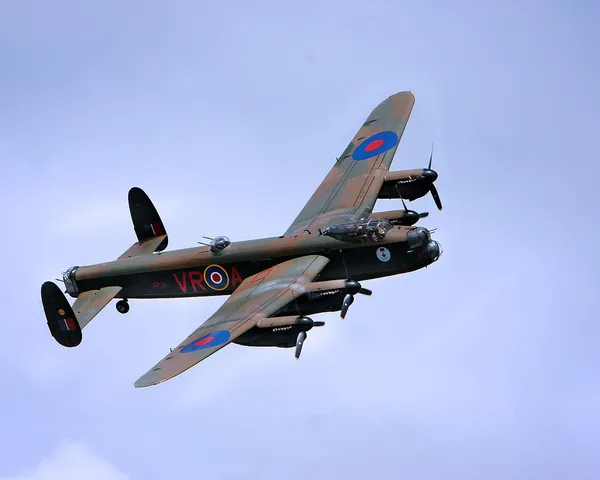
Canadian Warplane Heritage Museum
The Avro Lancaster is a British Second World War heavy bomber. It was designed and manufactured by Avro as a contemporary of the Handley Page Halifax, both bombers having been developed to the same specification, as well as the Short Stirling, all three aircraft being four-engined heavy bombers adopted by the Royal Air Force (RAF) during the same wartime era.
The Lancaster has its origins in the twin-engine Avro Manchester which had been developed during the late 1930s in response to the Air Ministry Specification P.13/36 for a capable medium bomber for "world-wide use". Originally developed as an evolution of the Manchester (which had proved troublesome in service and was retired in 1942), the Lancaster was designed by Roy Chadwick and powered by four Rolls-Royce Merlins and in one version, Bristol Hercules engines. It first saw service with RAF Bomber Command in 1942 and as the strategic bombing offensive over Europe gathered momentum, it was the main aircraft for the night-time bombing campaigns that followed. As increasing numbers of the type were produced, it became the principal heavy bomber used by the RAF, the Royal Canadian Air Force (RCAF) and squadrons from other Commonwealth and European countries serving within the RAF, overshadowing the Halifax and Stirling. Wikipedia
